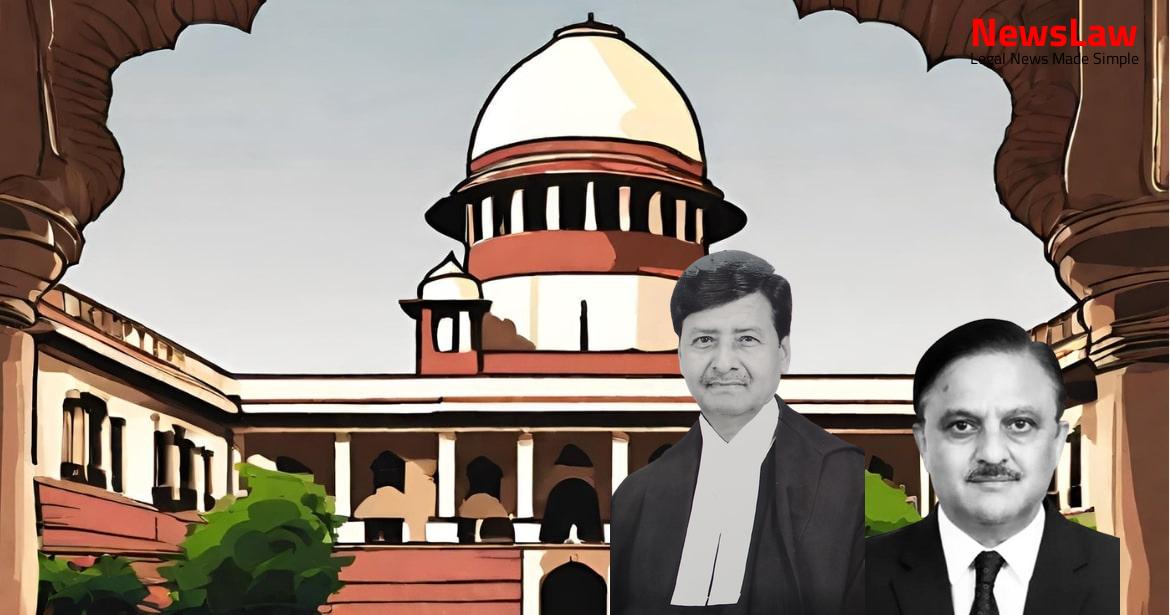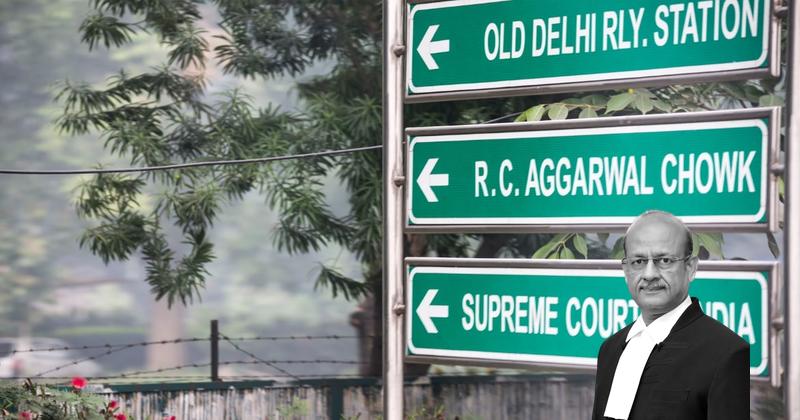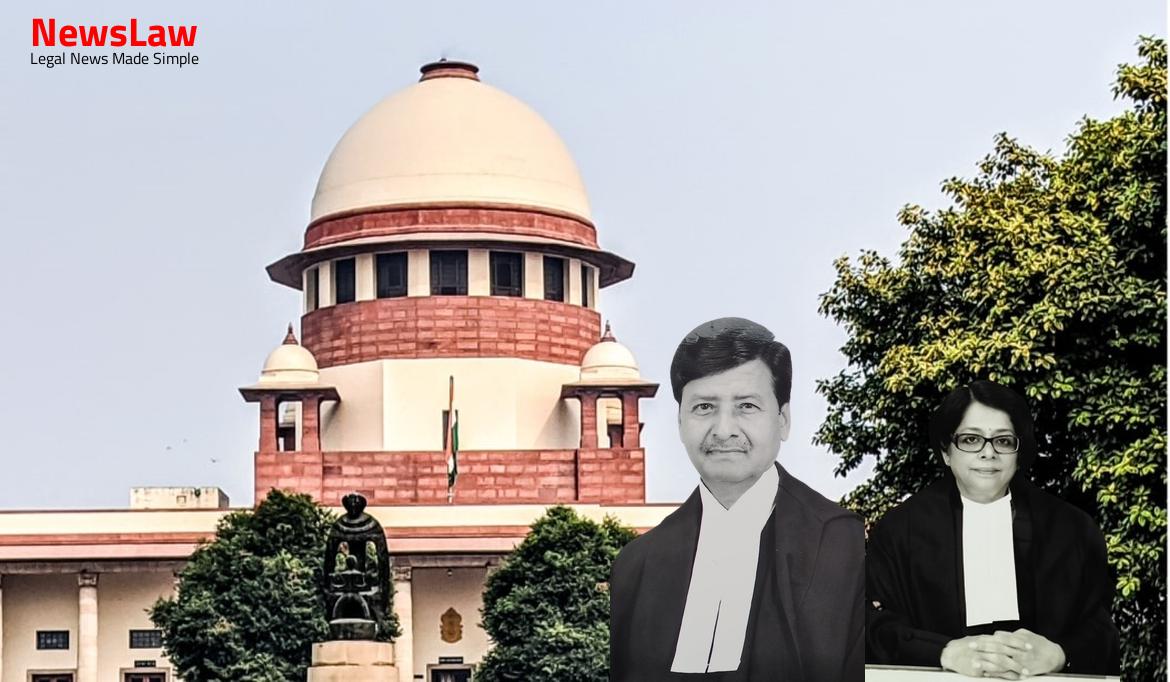Explore the judicial examination of Section 106 of the Evidence Act in the context of a murder case, focusing on the burden of proof and the application of circumstantial evidence. This case highlights the importance of a consistent chain of circumstances and the significance of the accused’s explanation or lack thereof. Dive into the legal nuances surrounding burden of proof and the analysis of evidence in criminal cases.
Facts
- The First Information Report was registered for the offence punishable under section 302 of IPC.
- The prosecution case reported the appellant’s wife died due to burn injuries on 18 November 2011.
- First Information Report was registered on 25 August 2012 by P.W.No.10 Shri Rajan Kumar Pandey as directed by a senior police officer.
- Autopsy was conducted on 18 November 2011 by P.W.No.9 Dr. Ashok Kumar Tiwari.
- An Unnatural Death Case (U.D. case) was registered based on information provided by Shri Mahesh Sah.
- Charges under Sections 302 and 201 of IPC were framed against the appellant.
- The cause of death, as per the post-mortem report, was ‘asphyxia due to pressure around neck by hand and blunt substance’.
- Appellant convicted for offences under Sections 302 and 201 of IPC.
- Directed to undergo rigorous imprisonment for default in fine payment.
- Imprisonment for life and fine of Rs. 5,000/- for offence under Section 302 of IPC.
- Both sentences to run concurrently.
Also Read: Recovery of Misappropriated Temple Funds: Court’s Legal Analysis
Arguments
- The appellant-accused’s counsel argued that the prosecution case lacks support from non-official witnesses.
- It was highlighted that other family members were present in the house when the alleged incident occurred.
- The mother of the deceased, PW No.5, did not support the prosecution.
- The State of Bihar’s counsel countered that the appellant’s defense of accidental death from burns was proven false by the autopsy report and Dr. Ashok Kumar Tiwari’s deposition.
- PW No.9 confirmed the cause of death as asphyxia.
- Reference was made to the judgment in Balaji Gunthu Dhule v. State of Maharashtra to support the arguments.
- The State argued that the relationship between the appellant and the deceased was normal, invoking Section 106 of the Evidence Act.
- The reliance on the post-mortem report as the main evidence for conviction was mentioned.
- It was noted that the testimonies of PW Nos.1 to 5 were already rejected by the Sessions Judge.
- The delayed registration of the First Information Report (FIR) was also brought up to question the established chain of events.
- Burden of explanation on the appellant-accused regarding the cause of death.
- False plea as burn injuries were not the cause of death.
- Evidence shows burn injuries on the deceased were not ante-mortem.
- Establishment of a chain of circumstances by the prosecution supporting guilt of the appellant.
- Failure of appellant to meet burden under Section 106 of the Evidence Act in a case based on circumstantial evidence.
- Accused’s claim of death due to accidental burn injuries.
Also Read: Determining Seniority in Delayed Appointments: Legal Analysis
Analysis
- The prosecution case is based on circumstantial evidence.
- The relationship between the appellant and his deceased wife was not strained.
- The burden of proving certain facts under Section 106 of the Evidence Act rests with the accused when the prosecution has successfully established relevant circumstances.
- The absence of explanation or a false explanation from the accused can be considered as an additional link in a chain of circumstances in a circumstantial evidence case.
- The prosecution, in this case, implicated only the appellant and not his family members.
- The prosecution failed to establish a consistent chain of circumstances pointing only to the guilt of the appellant.
- The learned Sessions Judge held that the chain of circumstances was consistent only with one hypothesis.
- Section 106 of the Evidence Act applies when the prosecution proves facts from which a reasonable inference can be drawn about certain other facts within the special knowledge of the accused.
- Falsity of the defense is not sufficient grounds for conviction if the chain of circumstances is incomplete.
- The intention behind Section 106 is not to place the burden on the accused to prove innocence, as per the interpretation by the Privy Council.
- In this case, none of the witnesses were eyewitnesses to the actual incident, and it was noted that other family members were present in the house at the time of the alleged incident.
- Section 106 of the Evidence Act is an exception to the general rule of burden of proof under Section 101.
- The burden of proof in a criminal case is on the prosecution, and Section 106 does not relieve them of that duty.
- Section 106 is meant for exceptional cases where certain facts are ‘especially’ within the knowledge of the accused, making it difficult for the prosecution to prove.
- Interpreting Section 106 otherwise would wrongly shift the burden onto the accused, such as in a murder case.
- The circumstances in a case must or should be established, not just ‘may be’ established, for drawing appropriate inferences.
- When a person does an act with some intention other than that which the character and circumstances of the act suggest, the burden of proving that intention is upon him.
- The post-mortem report alone cannot lead to a conviction under Section 302 of the IPC.
- Delay in registering the First Information Report was not explained by the prosecution.
- Only the medical practitioner’s opinion on the cause of death is considered for further consideration.
- The circumstances presented by the prosecution do not conclusively prove the guilt of the appellant-accused.
Also Read: Legal Analysis in Assault and Homicide Case
Decision
- The guilt of the accused has not been established beyond a reasonable doubt.
- The impugned judgment of the High Court dated 22 April 2019 is quashed and set aside.
- The appellant is acquitted from the charges under Sections 302 and 201 of the IPC.
- The appellant shall be set at liberty and bail bonds discharged, unless needed in another case.
- The appeal is allowed with no order as to costs.
Case Title: NAGENDRA SAH Vs. THE STATE OF BIHAR (2021 INSC 475)
Case Number: Crl.A. No.-001903-001903 / 2019



